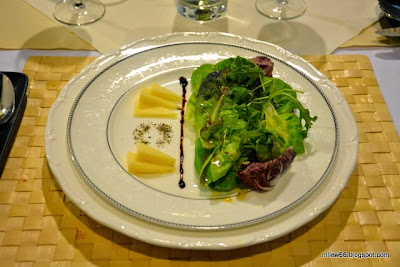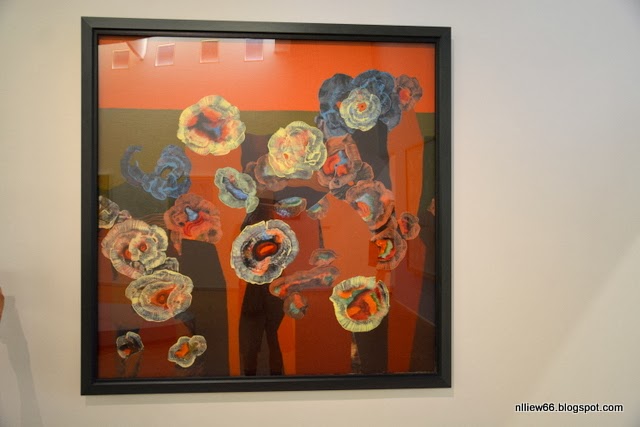Nearer to the border of Cameron Highlands, the vista changes...
Betau Valley

Thursday, 28 May 2015
Wednesday, 20 May 2015
Grandeur of the Betau Valley (1)
When one passes by the firsts forest covers that flank the route up Betau Valley, on the left, one should be aware of the giant koompasias or Tualangs that greet the travellers...
The light green canopy of the Tualang is due to its new leaves spurred on by the weather change...
Like slumbering giants awaken by the firsts ray of the morning sun among the tall canopies, Tualangs are usually spared by the chainsaws because of the low commercial value...
Mist rises up the canopies of the forest and slowly ascends the heavens above...
In the distant flowering Bauhinias covered lower trees, a haven for birds and insects...
And flowering canopies profited from the burst of morning sun to do its bidding...
Thursday, 14 May 2015
Dinner with friends - Labour Day Special
The last Labour Day weekend, some friends came visiting for outings into the forest so I didn't have much time to prepare - to solve the problem, I opted for a simple menu that can be prepared ahead of time and the final preparation was just "heating up"...
Smoked Saucise de Morteau with butter-infused potato mash. Simple and flavourful.
Lamb tajine served with couscous and a ratatouile.
To make the ratatouile:
1 kg of ripe tomatoes, blanched and skin removed
2 medium-sized courgettes (or called zucchini in Italian)
1 large aubergine
2 large onions
3 cloves of garlic
a small teaspoon of Herbes de Provence
1/2 cup of passata (Italian tomato purée)
1/2 cup of dry white wine
1 teaspoon of paprika powder
1/2 dried piment d’Espelette (optional)
1 sprig of fresh basil
Olive oil
Salt to taste
Salt to taste
Cube the courgettes and aubergines. Pan fry them with olive oil. Drain the cooking liquid by leaving the cooked vegetables on a chinois over a large bowl.
Finely slice the onions and fry them with olive oil until they start to soften and turns fragrant. Drain and set aside.
Quarter the tomatoes and cooked them in a separate pan with a tablespoon of brown sugar and 1/2 a cup of good olive oil. At this point, for flavour, you may add a dried basil leaf and the 3 cloves of garlic, sliced. Set aside.
Mix all the cooked ingredients in a large casserole. Add the wine, passata and the other ingredients. Cooked until the vegetabes are tender. Add the basil at last. This mixture goes well with many braised dishes such as a Tajine (above). They can be stored in an airtight glass jar in the fridge for up to 3 months.
A simple salade with wedges of Comte cheese.
perennial favourite: tiramisu
Monday, 11 May 2015
Beaubourg VII: Chagall and the Surrealists
From previous year's visit to the Beaubourg or Centre Georges Pompidou in Paris - the collection of Chagall...and his other peers of the period.
Chagall: Bella au col blanc, 1917
Otto Dix: Bildnis der Journalistin Sylvia von Harden, 1926
(Portrait of the journalist Sylvia von Harden)
Otto Dix: Erinnurengen an die Spiegelsäle von Brüssel, 1920
(Memories of the mirrored hall in Brussel, 1920)
Balthus: La toilette de Cathy, 1933
On Biomorphisme- Max Ernst: Fleurs de coquillages, 1929
Giorgio de Chirico: Ritrattro premonitore di Guillaume Apollinaire, 1914
(Premonitory portrait of Guillaume Apollinaire)
Yves Tanguy: A quatre heure d'été, l'espoir, 1929
(At four o'clock in summer, hope)
Chagall: Les mariès de la tour Eiffel, 1938-39
(The bride and bridegroom of the Eiffel Tower)
Tuesday, 5 May 2015
Pelur or Jungle Attap Palm, ecological roofing material from nature
I was doing my usual trek when I came upon an Orang Asli Semai couple preparing palm fronds by the open trail. When asked, the husband said it is called "Pelup" but the wife insisted "Pelur". The husband grudgingly nodded and I supposed that is the correct name....
This is a common palm that grows in disturbed and pristine forests from lowlands till mid-elevation. We used to use its rather pulpous stems as building material for bird traps in our childhood days. Todays' kids will never get the chance to do these - they'll be lucky to even know one exists....The Orang Asli uses this palm frond, dried, as the material for their thatched roofs. They can be differentiated from the other similar palms by its lack of spines along the frond and a waxy, whitish underside of the leaflets.
Once cut, one side of the leaf is folded to the other side much like folding a napkin...This is a common palm that grows in disturbed and pristine forests from lowlands till mid-elevation. We used to use its rather pulpous stems as building material for bird traps in our childhood days. Todays' kids will never get the chance to do these - they'll be lucky to even know one exists....The Orang Asli uses this palm frond, dried, as the material for their thatched roofs. They can be differentiated from the other similar palms by its lack of spines along the frond and a waxy, whitish underside of the leaflets.
They are then stacked nicely...
Subscribe to:
Posts (Atom)
















































